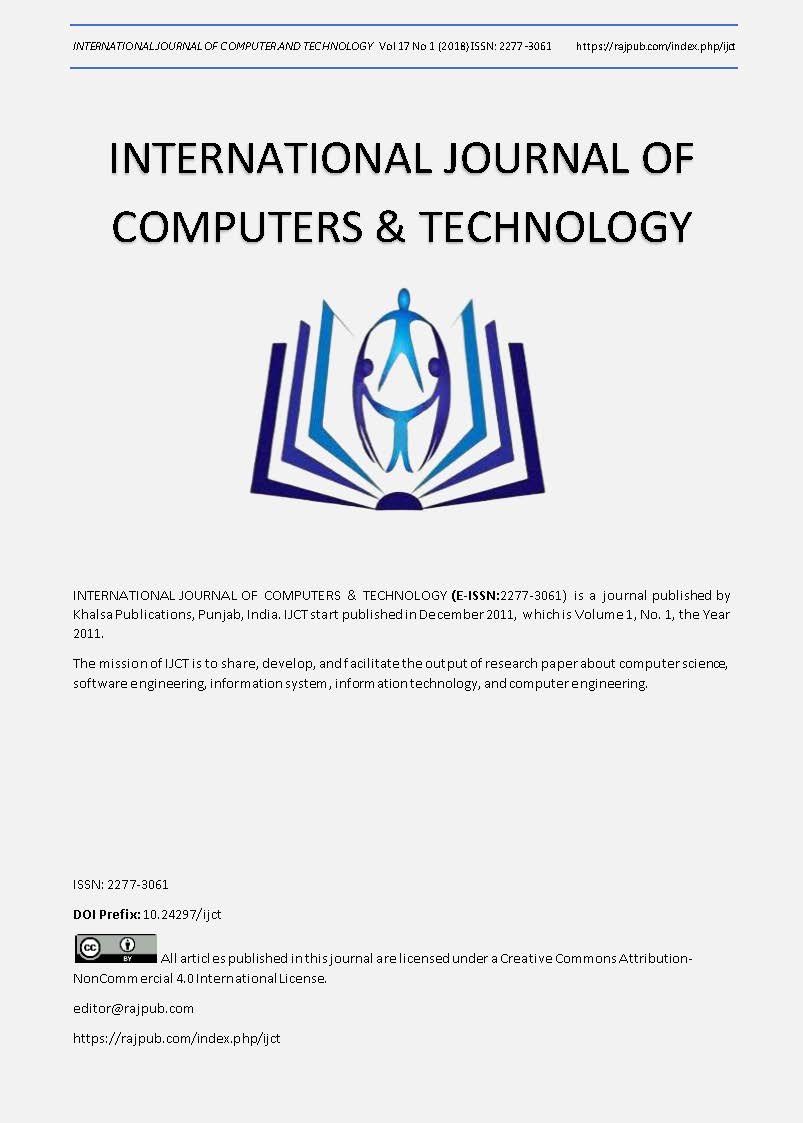AN ENHANCED CLUSTERING APPROACH FOR ENERGY EFFICIENT ROUTING IN WIRELESS SENSOR NETWORKS
DOI:
https://doi.org/10.24297/ijct.v17i1.7136Keywords:
Wireless, Sensor Networks, Protocol, Cluster Head, WSN, Fuzzy LogicAbstract
Energy consumption is the core issue in wireless sensor networks (WSN). To generate a node energy model that can accurately reveal the energy consumption of sensor nodes is an extremely important part of protocol development, system design and performance evaluation in WSNs. In this paper, by studying component energy consumption in different node states and within state transitions, the authors present the energy models of the node core components, including processors, RF modules and sensors. One of the major issues in wireless sensor networks is developing a routing protocol which has a significant impact on the overall lifetime of the sensor network. The network area is divided into same sized small–small regions. Sensor nodes are randomly deployed in each predefined sub-area. Each region will have its region head (RH) and multiple member nodes. The member nodes in a specific region will send the data to the RH. RH within the region will be elected by distributed mechanism and will be based on fuzzy variables. It was found that the proposed algorithm gives a much improved network lifetime as compared to existing work. Based on our model, transmission tuning algorithm for cluster-based WSNs has been proposed to balance the load among cluster heads that fall in different regions. This algorithm is applied prior to a cluster algorithm to improve the performance of the clustering algorithm without affecting the performance of individual sensor nodes.
Downloads
References
[2] Akkaya, K., & Younis, M. [2005], “A survey on routing protocols for wireless sensor networks. Ad Hoc Networksâ€, 3, 325–349.
[3] Acharya, S., and Tripathy, C. R. [2015], “An ANN Approach for Fault Tolerant Wireless Sensor Networksâ€, in Emerging ICT for Bridging the Future-Proceedings of the 49th Annual Convention of the Computer Society of India CSI Volume 2 (pp. 475-483). Springer International Publishing.
[4] Prakash, T. S., Raja, K. B., Venugopal, K. R., Iyengar, S. S., and Patnaik, L. M. [2014], “Fault Tolerant QoS Adaptive Clustering for Wireless Sensor Networks. In Proceedings of Ninth International Conference on Wireless Communication and Sensor Networksâ€, (pp. 167-175). Springer India.
[5] Nesrine, K., and Ben Jemaa, M. [2012], “HEERP Hierarchical energy efficient routing protocol for Wireless Sensor Networksâ€, in Communications and Information Technology (ICCIT), 2012 International Conference on (pp. 308-313). IEEE.
[6] Yu, J., Qi, Y., Wang, G., and Gu, X. [2012], “A cluster-based routing protocol for wireless sensor networks with non uniform node distributionâ€, AEU-International Journal of Electronics and Communications, 66(1), 54-61.
[7] Kumar, N., Bhutani, P., and Mishra, P. [2012], “U-LEACH: A novel routing protocol for heterogeneous Wireless Sensor Networksâ€, in Communication, Information & Computing Technology (ICCICT), 2012 International Conference on (pp. 1-4). IEEE.
[8] Patle, D., and Nemade, S. [2015], “A Literature Survey on Different Type of Energy Efficiently Routing Protocol in Wireless Sensor Network. International Journal of Scientific Engineering and Technologyâ€, 4(1), 28-31.
[9] Ravi, M., and Subramaniam, P. [2014], “Wireless Sensor Network and its Security–A Surveyâ€, International Journal of Science and Research (IJSR), 3(12)
[10] Sun, F., Zhao, Z., Fang, Z., Du, L., Xu, Z., & Chen, D. [2014], “A Review of Attacks and Security Protocols for Wireless Sensor Networksâ€, Journal of Networks, 9(5), 1103-1113.
[11] S.Sudha, N. Hemavathi [2014], “A Hybrid Clustering Algorithm for Optimal Clustering in Wireless Sensor Networksâ€. IEEE 2014.
[12] Kamanashis Biswas,Vallipuram Muthukkumarasamy,Elankayer Sithirasenan [2013], “Maximal Clique Based Clustering Scheme for Wireless Sensor Networksâ€, 978-1-4673-5501-8/13/2013 IEEE
[13] Raza H. Abedi, Nauman Aslam and Sayeed Ghani [2011], “Fault Tolerance Analysis of Heterogeneous Wireless Sensor Networkâ€, 978-0-7695-4466-8/11/2011 IEEE.
[14] Lutful Karim and Nidal Nasser [2011], “Energy Efficient and Fault Tolerant Routing Protocol for Mobile Sensor Networkâ€, 978-1-61284-233-2/11/2011 IEEE.
[15] Geetha D.,Nalini N. and R. C. Biradar [2012], “Active Node based Fault Tolerance in Wireless Sensor Networkâ€, 978-1-4673-2272-0/12/2012 IEEE.
[16] Mohamed Lehsaini and Chifaa Tabet Hellel [2012], “A Novel Cluster-based Fault-tolerant Scheme for Wireless Sensor Networksâ€,2012 24th International Conference on Microelectronics (ICM).
[17] Arunanshu Mahapatro and Pabitra Mohan Khilar. [2013], “Fault Diagnosis in Wireless Sensor Networks: A Surveyâ€, IEEE Communications Surveys & Tutorials ,Vol.15, No 4.
[18] K. Kulothungan, J. Angel Arul Jothi, A. Kannan [2011], “An Adaptive Fault Tolerant Routing Protocol with Error Reporting Scheme for Wireless Sensor Networksâ€, European Journal of Scientific Research, Vol. 16, pp, 19-32, No.1, 2011.
[19] K Abbas Nayebi, Hamid Sarbazi-Azad [2011], “Performance modeling of the LEACH protocol for mobile wireless sensor networksâ€, J. Parallel Distrib. Comput. 71, ELSEVIER pp. 812–821, 2011.
[20] Vinay Kumar, Sanjeev Jain and Sudarshan Tiwari [2011], “Energy Efficient Clustering Algorithms in Wireless Sensor Networksâ€, IJCSI, Vol. 8 , 2011.









